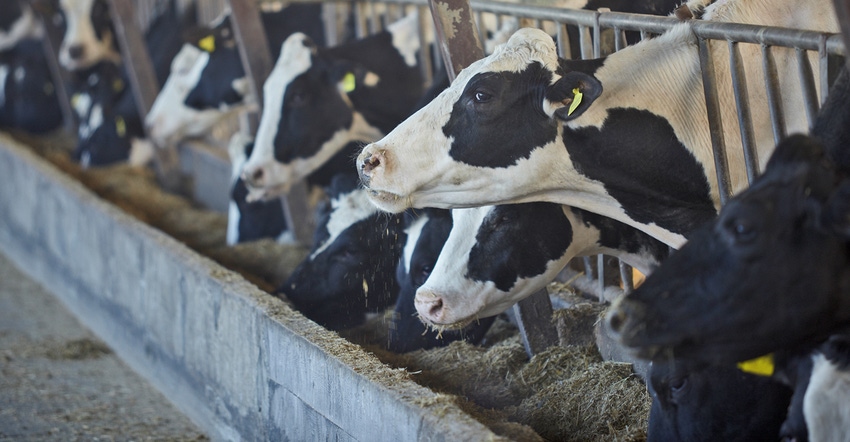
In January, CME spot nonfat dry milk (NDM) logged a fresh two-year high, reaching $1.04 per pound. The Global Dairy Trade auction provided the fuel for the fire in the milk powder markets. According to USDA, skim milk powder (SMP) prices soared at the GDT, jumping 10.3% to the equivalent of NDM at $1.16 per pound — the highest price since February 2017. GDT whole-milk powder prices climbed 3%. But cheese markets dropped. On Jan. 17, CME spot Cheddar barrels plunged to $1.18, their lowest value since July 2009. They finished Jan. 20 at $1.20, down 4.5 cents for the week. Blocks declined 1 cent to close at $1.40.
Foreign production mixed
According to USDA reports, milk powder markets have been buoyed by strong demand for dairy solids from Asia and Mexico, slower growth in U.S. milk output, and contraction in Europe. In November, European milk collections totaled just 26.7 billion pounds, down 0.7% from the prior year.
USDA says milk output is noticeably lower among some of the bigger players, especially in the Netherlands, where newly enforced phosphorescence regulations have lowered cow numbers. Dutch milk production fell 6.8% from a year ago in November and was down 6.2% in December. Top-ranked Germany reported a 1.2% year-over-year decline in November milk output, its largest shortfall since November 2017. Production slumped 3.7% in France. However, these deficits were partially offset by a 0.6% increase in British output, a 3% improvement in Poland and a 23.1% jump in Ireland’s off-season milk production.
Just like in the U.S., the dryer is bearing the brunt of the shortfall. European SMP production in November fell 8.7% from the prior year. Cheese production slipped 0.8%. After years of cheap and plentiful milk powder, buyers have likely been caught flat-footed by lower output and rising prices, which suggests that further strength is possible as they secure product.
However, there is plenty of milk available for dryers in New Zealand. December milk collections reached 6 billion pounds, up 4.4% from a year ago on a fluid basis and up 6.1% on a milk solids basis. Season-to-date milk solids collections are up 5.2% from the 2017-18 season. New Zealand stepped up milk production by 253.5 million pounds in December, dwarfing Europe’s substantial milk production deficit, which totaled 177.9 million pounds in November. The fact that milk powder prices are rising while New Zealand milk production outpaces expectations suggests that demand for powder is robust.
Burdensome supplies
U.S. cheese markets remain burdened with high supplies and production. According to USDA, there is plenty of milk for cheesemakers in the East and the West to run at or near capacity. In the East, where there is noticeably less milk available than last year, market participants report there is heavy cheese production and lower demand. Furthermore, there are some reports of decreased export interest from some markets.
In the Central region, where milk is also short, plant managers who typically run a six- or seven-day work week have reported limiting work to five days when possible, depending on milk availability. But a few plants taking a day off from time to time doesn’t necessarily mean lower regional cheese production, given new and expanded capacity. Cheese is cheap, but on the whole, domestic output does not seem to be slowing measurably. According to USDA, barrel makers are likely shifting milk to other varieties, which could slowly lift that market out of the doldrums.
USDA reports cow slaughter volumes remain high, sellouts continue and growth in milk output has likely slowed to a crawl. The stage has been set for better Class III prices, but they may be slow to arrive.
About the Author(s)
You May Also Like






